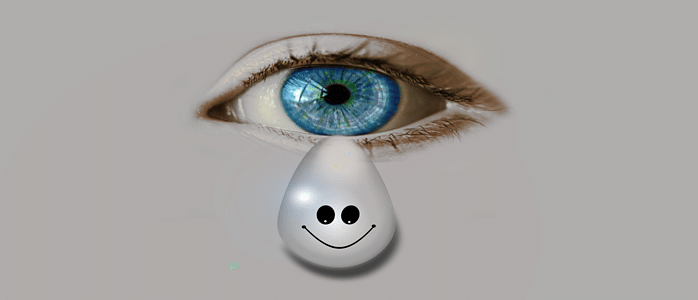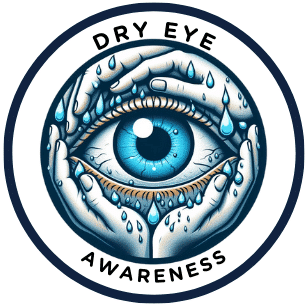
Combat dry eye discomfort with accurate diagnosis and personalized treatment. Advanced techniques like ocular surface staining and LipiView imaging revolutionize diagnosis, guiding tailored treatment for optimal relief. Early detection with the Sjo Test underscores the importance of regular eye care.
Dry Eye Syndrome is more than a minor inconvenience; it represents a multifaceted ocular condition affecting millions. Its symptoms of discomfort, visual disturbance, and tear film abnormalities can significantly impact daily activities and quality of life. I approach its diagnosis with both compassion and rigor, utilizing a plethora of diagnostic tests and techniques to ensure accurate and personalized treatment for my patients.
The diagnostic journey begins with a comprehensive evaluation that may include patient history, symptom assessment, and eye examination. But it doesn’t stop there; specialized tests are paramount for assessing the tear film and ocular surface – the front lines in the battle against dry eye. This assortment of tools at our disposal enables us to pinpoint the underlying causes and tailor treatments effectively.
From an intricate understanding of the disease to the subtle nuances of each patient’s experience, the diagnostic process is crucial. It helps in distinguishing between Dry Eye Syndrome and other conditions with similar symptoms. Furthermore, a precise diagnosis lays the groundwork for targeted therapies that can offer significant relief and improved eye health.
So, for those who are stepping into the realm of dry eye diagnostics or living with dry eye, rest assured that advancing techniques are improving the way we address this condition. Next, we delve into the complexities of tear film stability, an essential component of dry eye diagnosis, where we discover how tests like the Fluorescein Tear Break-Up Time (TBUT).
Unlocking the Secrets of Tear Film Stability and Function
Tear film stability is a vital component in ensuring the overall health of your eyes. It’s a thin layer that serves several functions: it keeps your eyes moist, provides nutrients to corneal cells, and creates a smooth surface for clear vision. But when this film is unstable, you might experience discomfort, irritation, and the symptoms associated with Dry Eye Syndrome.
Fluorescein TBUT, or Tear Break-Up Time, is a common test that measures how long your tear film stays intact before it starts to break apart. I apply a special dye to your eyes and observe under a microscope. A longer breakup time typically means a more stable tear film, which is good news for your eyes. The normal range for BUT is generally around 10-12 seconds, but this can vary based on individual conditions and environmental factors.
Now, when I talk about interpreting fluorescein patterns, I’m referring to the unique way your tear film might dissolve. These patterns help me pinpoint what exactly is going wrong with the tear layers. Depending on what I see, your treatment could include anything from artificial tears to more specialized options to address the specific layer of the tear film affected.
With these insights in hand, the next step is to look more closely at how this information about tear film contributes to our understanding of eye health. We’re not just investigating tear stability; we’re piecing together the intricate puzzle of Dry Eye Syndrome to offer you more precise and personalized care.
Beyond the Surface: Advanced Techniques in Ocular Health Assessment
When it comes to diagnosing dry eye syndrome, peering beyond the superficial layers of the eye is crucial. Ocular health specialists employ a suite of advanced diagnostic techniques to unravel the complexities of this condition. One such method is ocular surface staining, which leverages dyes like fluorescein, lissamine green, and rose bengal to reveal the health of the eye’s surface.
Fluorescein dye, for instance, is applied to the eye to assess the condition of the dry eye. Under blue light illumination, any damage to the eye’s surface cells will appear as bright green patches. This method is vital for identifying abnormal or missing epithelial cells, which are often the troublemakers in dry eye syndrome.

Lissamine Green is a green dye that helps identify the presence of devitalized cells on the ocular surface, which indicates the severity of your Dry Eye.
A parallel approach is assessing tear volume — an essential factor in diagnosing dry eye. The Schirmer’s Test is widely used, where a small strip of filter paper is placed at the eye’s edge. If less than 10 millimeters of the strip wets in 5 minutes, it indicates reduced tear production. Another technique is to estimate the height of the tear meniscus after the introduction of fluorescein dye, though the methodology for this varies.
Analyses don’t stop at just the volume; the tear’s chemical properties also provide insight. The Phenol Red Test uses a pH-sensitive dye that, when inserted into the eye, changes color based on the tear’s volume. Abnormal variations signify potential dry eye syndrome. I personally prefer using the Phenol Red test for my patients because it is more comfortable than the Schirmer’s Test.
Moving into even more advanced territory, tear osmolarity is often measured using nanoliter instruments. High osmolarity levels, particularly those above 300 mOsm/kg, are indicative of dry eye, as they suggest an imbalance in the tear film’s homeostasis.
Cutting-Edge Imaging and Biomarkers: Shaping the Future of Dry Eye Diagnosis
In conclusion, the field of dry eye diagnosis is witnessing remarkable advancements with the integration of cutting-edge imaging and sophisticated biomarkers. These innovations are not only refining the accuracy of dry eye assessments but are also unveiling new layers of complexity within the condition.
The implementation of interferometric techniques, particularly through devices like LipiView, has revolutionized our approach to measuring the lipid layer and blink dynamics. By quantifying these factors, eye care professionals can personalize treatments in ways that were not previously possible, tailoring interventions to the unique needs of each patient.
Similarly, meibography’s ability to visualize meibomian gland structure is a game-changer. It provides clinicians with critical insights into the gland’s health, which plays a vital role in tear film quality and eye comfort. Such detailed imaging aids in diagnosing conditions like meibomian gland dysfunction, often a hidden contributor to dry eye.
Finally, the Sjo Test is a reflection of how far we’ve come in preemptive health care strategies. This in-office blood test facilitates the early diagnosis of Sjögren’s Syndrome, enabling earlier intervention and potentially preventing further ocular complications. By including a panel that detects traditional and tissue-specific autoantibodies, the test represents a significant step towards a future where early detection and prevention are the norms.
As a first step towards better dry eye management, patients can maintain regular consultations with their eye care providers, ensuring that the latest diagnostic tools and treatment plans are considered. The future of dry eye diagnosis is bright, and by staying informed and engaged with emerging technologies, patients and providers together can ensure the best possible outcomes.


I was not aware of so many different tests that can be done to determine the presence and severity of dry eye disease, so found this article to be very informative and insightful. Anyone suffering from dry eye syndrome, will find it helpful that there are several tests available to help with early detection and therefore treatment.
Is it possible to reverse dry eye syndrome? Or is it irreparable once one is diagnosed with dry eye syndrome? Is it a condition that affects all ages, or is it more prevalent in the elderly? Thank you for expanding.
Thank you for your comment and I am glad my article was helpful to you.
Dry Eye Syndrome is a chronic condition. However, it can be managed effectively to resolve symptoms and improve eye function and comfort. Most the time any damage to the ocular tissues caused by Dry Eye Syndrome can be resolved with proper treatment.
Dry Eye Syndrome is more prevalent in the elderly but it can occur at any age.
With proper awareness and yearly eye examinations with your eye doctor, Dry Eye Syndrome can be diagnosed at an early stage and any symptoms can be effectively treated to manage symptoms.